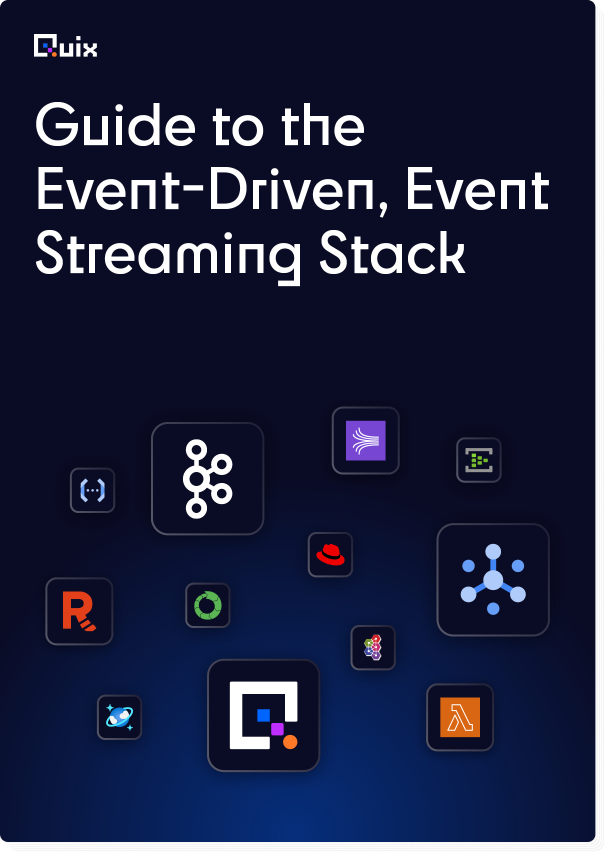The Stream — May 2022 edition
The May 2022 edition of The Stream: covering this month in stream processing on the internet.

At Quix, we say that real-time stream processing is human
Humans can’t survive without continuously processing and acting on data as it arrives. We take in information from our environment, transform it with various biological processes and react immediately. Most human activities involve real-time stream processing, even if our bodies run systems without our conscious awareness.
Imagine if humans didn’t do this. What if we operated on batch processing? What would happen if we took photographs every thirty seconds to analyze once a day rather than constantly looking around? How would it go if we relied on historical data to navigate grocery stores? Life would be a lot like herding cats. (Well, certainly a lot worse than that.)
We need our technology to rely on stream processing so that it can better support human activity. Data tech increasingly supports our personal and business lives, and that’s not going to stop anytime soon. The products and tools we build to help people make financial decisions for their families and companies, doctors to diagnose patients, and smart cities to operate sustainably cannot succeed if they function slower than the markets, biology, and vehicles. Without stream processing, data products and tools can’t keep up with humans and human society.
Thankfully, the fact that streaming is human makes streaming architecture a little less overwhelming to conceptualize, build, maintain and improve. We think that individuals and teams can overcome streaming challenges with a stack of the right microservices. Challenges might still exist, but they don’t stem from fundamental ideas.

Learn how to build a sentiment analysis Python service that connects, transforms and delivers data in real time
At the London Python User Group meetup in April, Tomas Neubauer and Javier Blanco built a chat application that keeps out unwanted language and tracks the positive or negative quality of each message let in. You can build it too.

Kafka Summit London 2022: The Full Recap
Kafka Summit returned in all its glory to welcome over 1,200 people — real human beings — back to discuss steam processing in person.

Building a real-time chat app with React, Laravel and Ably
You use real-time communication every day when you exchange information between a sender and a receiver with almost zero latency. Learn how to build a real-time public chat app using React.js, Laravel and Ably.

The Stream is out and about in May
Meet Quix and other streamers at the World Data Summit in Amsterdam, DevOps Pro Europe and Machine Learning Prague 2022.
More insights
We hope you had a wonderful Star Wars Day. ⭐ Please enjoy Montreal Analytics’s competition for the best Star Wars-data meme.

What’s a Rich Text element?
The rich text element allows you to create and format headings, paragraphs, blockquotes, images, and video all in one place instead of having to add and format them individually. Just double-click and easily create content.
Static and dynamic content editing
A rich text element can be used with static or dynamic content. For static content, just drop it into any page and begin editing. For dynamic content, add a rich text field to any collection and then connect a rich text element to that field in the settings panel. Voila!
How to customize formatting for each rich text
Headings, paragraphs, blockquotes, figures, images, and figure captions can all be styled after a class is added to the rich text element using the "When inside of" nested selector system.

Check out the repo
Our Python client library is open source, and brings DataFrames and the Python ecosystem to stream processing.

Interested in Quix Cloud?
Take a look around and explore the features of our platform.

Interested in Quix Cloud?
Take a look around and explore the features of our platform.






